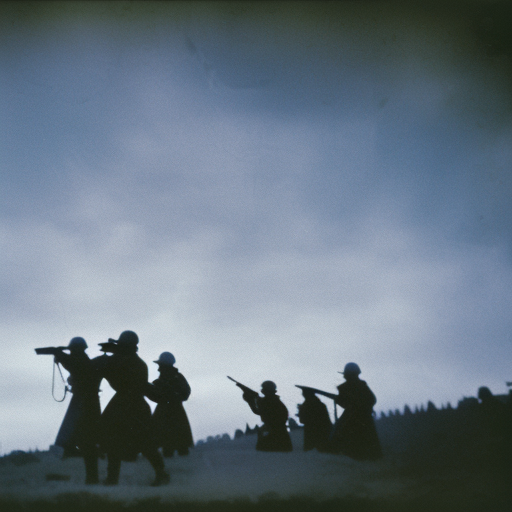Battle of Tannenberg: A Decisive German Victory in World War I
The Battle of Tannenberg was a significant military engagement that took place during the early stages of World War I. It occurred between August 26 and 30, 1914, near the town of Tannenberg in East Prussia (present-day Poland). The battle was fought between the German Empire and the Russian Empire, resulting in a decisive German victory.
Background:
At the outbreak of World War I, the German Empire faced a two-front war against France in the west and Russia in the east. The German High Command devised a plan known as the Schlieffen Plan, which aimed to quickly defeat France before turning their attention to the Eastern Front. However, the Russian army mobilized faster than expected, posing a threat to German territories in the east.
German Strategy:
The German Eighth Army, led by General Paul von Hindenburg and his chief of staff General Erich Ludendorff, was tasked with defending East Prussia against the advancing Russian Second Army, commanded by General Alexander Samsonov. Hindenburg and Ludendorff devised a plan to trap and annihilate the Russian forces by using their superior mobility and knowledge of the terrain.
The Battle:
The battle began on August 26, 1914, when the Russian Second Army launched an offensive against the German Eighth Army. The Russian forces initially made progress, pushing back the German defenders. However, the Germans skillfully executed their plan, luring the Russians deeper into their trap.
Encirclement:
Hindenburg and Ludendorff ordered a strategic retreat, drawing the Russians into a vulnerable position. The German forces skillfully coordinated their movements, encircling the Russian Second Army from three sides. The Russian command was caught off guard by the speed and efficiency of the German maneuver.
Annihilation:
With the Russians encircled, the German forces launched a devastating counterattack. The Russian Second Army was surrounded and cut off from their supply lines. The Germans unleashed a barrage of artillery fire and conducted relentless infantry assaults, inflicting heavy casualties on the trapped Russian forces.
Russian Collapse:
Facing imminent defeat, General Samsonov committed suicide on August 29, 1914. The remaining Russian troops attempted to break out of the encirclement but were met with fierce resistance. The German forces continued their assault, and by August 30, the Russian Second Army had been effectively destroyed.
Aftermath:
The Battle of Tannenberg was a resounding victory for the German Empire. The Russian Second Army suffered heavy losses, with estimates ranging from 70,000 to 170,000 casualties, including prisoners of war. In contrast, the German Eighth Army lost around 13,000 men. The battle boosted German morale and demonstrated the effectiveness of their military strategy.
Significance:
The Battle of Tannenberg had significant implications for the course of World War I. It eliminated the immediate threat to German territories in the east and allowed the German High Command to focus their efforts on the Western Front. The victory also established Hindenburg and Ludendorff as national heroes in Germany.
Legacy:
The Battle of Tannenberg remains a symbol of German military prowess and strategic brilliance. It is often cited as an example of how a smaller force can defeat a larger one through superior planning and execution. The battle also highlighted the importance of mobility and the effective use of artillery in modern warfare.
In conclusion, the Battle of Tannenberg was a decisive German victory that occurred during the early stages of World War I. The German Eighth Army, led by Hindenburg and Ludendorff, successfully encircled and annihilated the Russian Second Army. The battle had significant implications for the course of the war and remains a testament to German military skill and strategy.












